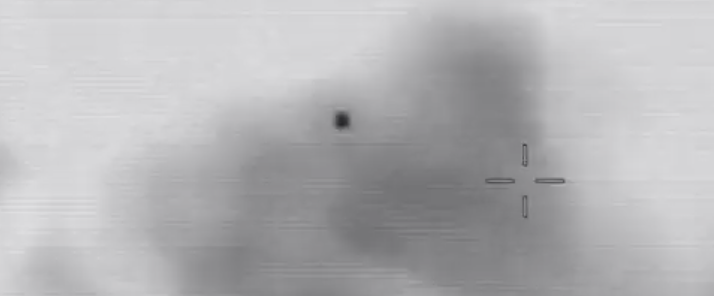What began as a mysterious infrared capture of a fast-moving spherical object transiting an erupting volcano has officially been debunked by the Pentagon’s All-domain Anomaly Resolution Office (AARO).
The Mt. Etna Object - filmed by a U.S. military drone monitoring volcanic activity near Naval Air Station Sigonella - was initially believed to be demonstrating high-speed flight and anomalous resistance to ash and gas plumes.
"The object appeared to transit a superheated plume at speeds exceeding 345 mph without loss of altitude or bearing."
- Initial U.S. drone operator report
But after over five years of multi-agency analysis and modeling, AARO reached a firm conclusion:
It was a balloon - and it wasn’t even close to the volcano.
🛰️ How It Was Filmed
The object was captured in shortwave infrared (SWIR) by a surveillance drone in December 2018, during a live operation over the Mediterranean.
Key data reported by the UAS operator included:
-
Altitude: 500 ft (assessed later as ~15,000 ft)
-
Apparent speed: 345 mph (assessed as 24 mph)
-
Shape: Round/Spherical
-
Duration of visibility: ~4.5 minutes
"The object’s movement appeared unaffected by volcanic gas and ash - raising concerns of unknown technology or anomalous propulsion."
- Operator summary

🔍 What AARO Found
The final report by AARO dismantles each of the anomalous claims:
-
Speed: The object’s actual speed was just 24 mph, consistent with prevailing winds.
-
Proximity to the volcano: The object was never in the plume - it was over 100 miles away.
-
Shape and size: AARO concluded the object was a 1-foot-wide spherical balloon based on photogrammetry and pixel analysis.
-
Optical illusions: What appeared to be speed and defiance of turbulence was actually motion parallax, an optical effect caused by viewing a slow object from a moving drone.
"AARO assessed with high confidence that the object did not exhibit anomalous performance characteristics."
- Mt. Etna UAP Case File
📊 Modeling and Error Correction
Using full-motion video analysis, wind mapping, and 3-D reconstruction, AARO developed a predictive model that successfully tracked the object’s trajectory even when it became invisible to the naked eye.
This model aligned with independent work done by a government partner, confirming the slow movement, spherical shape, and distance from the eruption site.
❗ False Positives and Atmospheric Tricks
The report cautions that sensor limitations, volcanic heat, and SWIR camera constraints created misleading imagery.
-
Volcanic ash and gas interfered with IR signatures
-
Thermal turbulence added distortion
-
Post-processing filters amplified visual artifacts like flickering and blur
AARO concluded that initial assumptions were exaggerated due to degraded data and visual artifacts.

🐦 What About the Bird Theory?
One early theory - that the object was a bird - was discarded after analysis showed the apparent "wing flapping" was actually a visual artifact caused by flickering pixel contrast in SWIR.
"The flicker rate is not consistent with avian locomotion," analysts wrote.
"This was not a biological object."
🧩 Case Closed(?)
The Mt. Etna case was one of the more publicly speculated UAP clips in military circles - but this release pulls the curtain all the way back.
It wasn’t an alien craft. It wasn’t even a drone.
It was a slow-moving, wind-borne balloon misperceived under extreme conditions, captured by a sensor that wasn’t designed to track aerial targets.
"The object did not pass through the volcano’s ash plume. It was 106 miles away."
- AARO Final Determination
As the U.S. military deepens its review of UAP encounters, this case stands as a reminder: not everything unidentified is unexplainable.






